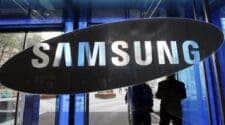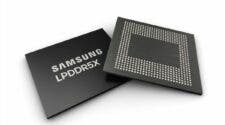According to industry sources, with the emergence of generative artificial intelligence (AI) techs such as ChatGPT, the DRAM market is expected to recover earlier than expected. ChatGPT is a new AI chat robot tool launched by the American AI research company OpenAI on November 30, 2022. It can quickly generate articles, stories, lyrics, prose, jokes, and even codes according to user requirements, and answer various questions doubt. Once ChatGPT was released, it set off a storm on the Internet. In less than a week of launch, it gained over 1 million users. Two months after launch, it surpassed 100 million users, making it the fastest-growing consumer app in history.

The fire of ChatGPT has triggered the follow-up of peers. To compete with ChatGPT, Google announced that it will launch a conversational chatbot called Bard. Baidu plans to launch an AI chatbot service similar to ChatGPT in March this year. However, whether it is ChatGPT under OpenAI or other AI chatbots similar to ChatGPT, a large number of servers are required to maintain operation. This means that there will be a much higher demand for GPU, DRAM and other fields.
Last year, the DRAM market was not ideal as demand slumped due to a gloomy global economic outlook. Previously, some research institutions predicted that the global DRAM market will be even less optimistic this year. The prediction also claims that the market size will only grow by 8.3%. This is the first time in history that it will be lower than 10%.

DRAM market issues
Over the years, the DRAM market has been facing a lot of issues. Below, we highlight some of these issues
- Oversupply: The DRAM market has been facing over supply issues. This has led to a decline in prices and reduced profits for brands. Over supply occurs when there is more DRAM than demand. This leads to excess inventory and lower prices.
- Price fixing issues: Major DRAM brands have been accused of colluding to fix prices. This has resulted in billions of dollars in fines and legal settlements. These allegations have also damaged the reputation of the industry and eroded trust among customers.
- Trade tensions: The DRAM market has been affected by trade tensions between major players such as the US and China. Tariffs and other trade barriers can increase costs for brands and disrupt supply chains.
- Tech advancements: The demand for DRAM is heavily dependent on tech advancements and new applications. For example, the rise of cloud computing and AI has increased the demand for high-capacity and high-performance DRAM. However, the decline of the PC market has reduced demand for lower-capacity DRAM.
- COVID-19 pandemic: The COVID-19 pandemic has disrupted supply chains and reduced demand for many products, including DRAM. The pandemic has also led to increased volatility and uncertainty in the market.
Others Include
- Production and supply chain issues: The production of DRAM involves complex and sophisticated manufacturing processes, and any issues in production or the supply chain can lead to delays and disruptions. For example, natural disasters, equipment failures, and component shortages can all impact production and supply.
- Market “monopoly”: The DRAM market is dominated by a few major players. This can make it difficult for new entrants to compete. This “monopoly” has led to concerns about practices and reduced competition. Of course, it harms the end users.
- Intellectual property disputes: DRAM brands have also faced legal challenges related to intellectual property disputes. These disputes can lead to costly legal battles and may impact the ability of companies to innovate and develop new products.
- Environmental concerns: The manufacturing of DRAM involves the use of hazardous chemicals and generates huge amounts of waste. This has led to concerns about the environmental impact of the industry and calls for better practices.
- Shifts in consumer behavior: As consumer preferences and behaviors change, so too does the demand for DRAM. For example, the rise of mobile devices and wearable tech has increased demand for low-power DRAM. However, the decline of the regular desktop computer has reduced the demand for standard DRAM modules.



